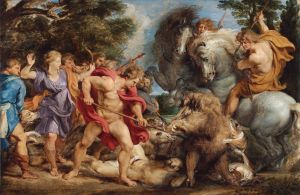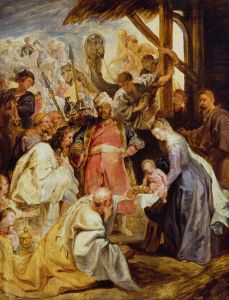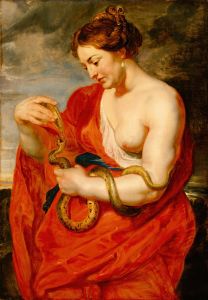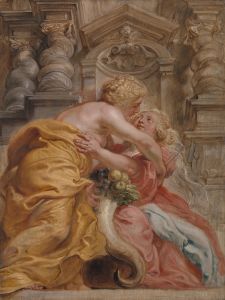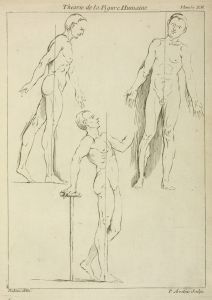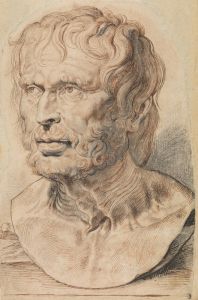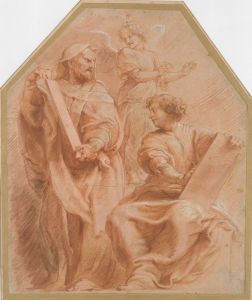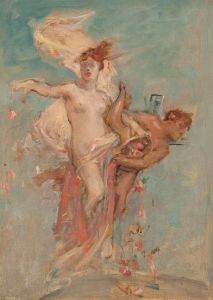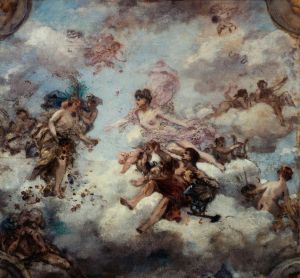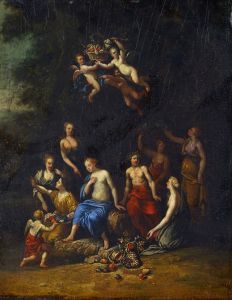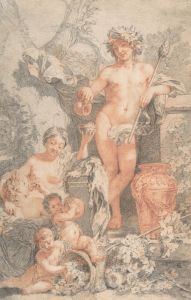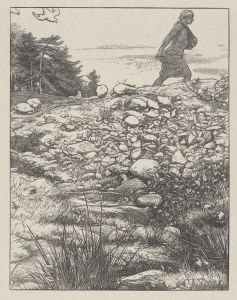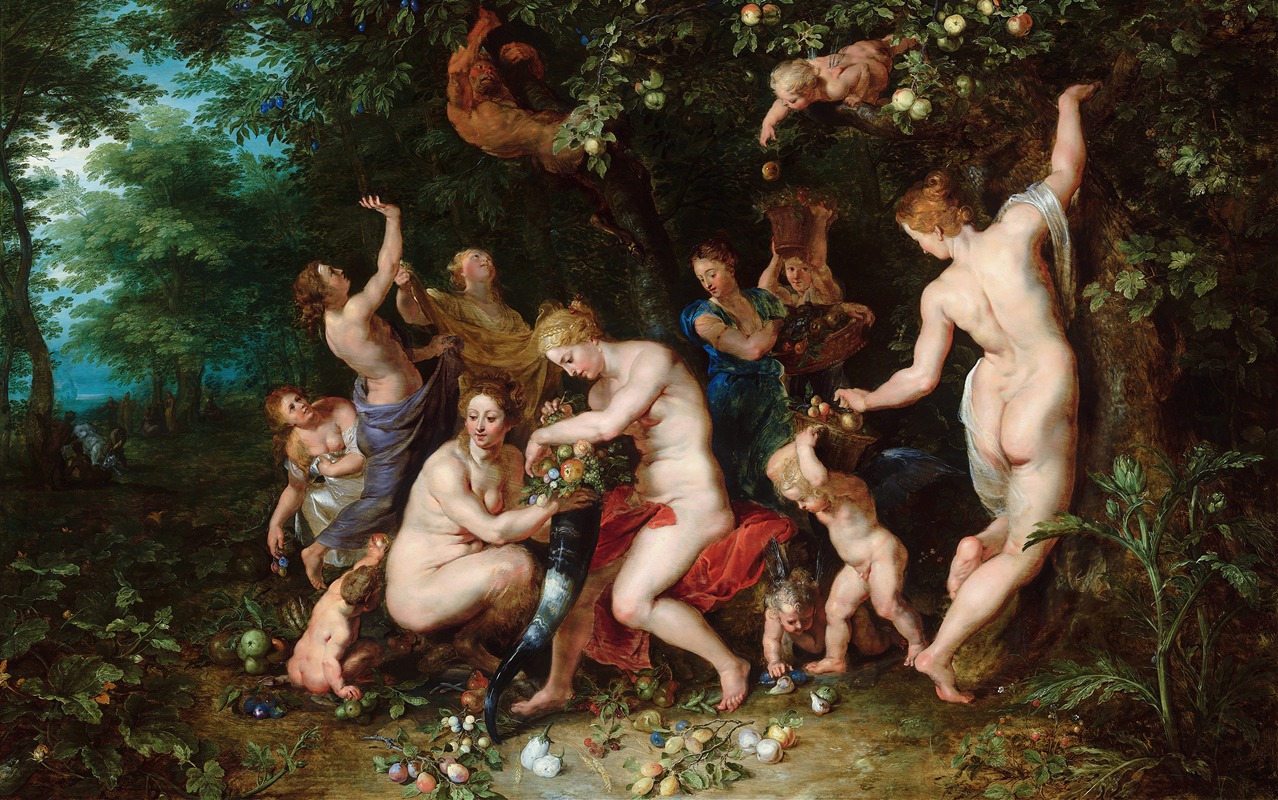
Nymphs Filling The Cornucopia
A hand-painted replica of Peter Paul Rubens’s masterpiece Nymphs Filling The Cornucopia, meticulously crafted by professional artists to capture the true essence of the original. Each piece is created with museum-quality canvas and rare mineral pigments, carefully painted by experienced artists with delicate brushstrokes and rich, layered colors to perfectly recreate the texture of the original artwork. Unlike machine-printed reproductions, this hand-painted version brings the painting to life, infused with the artist’s emotions and skill in every stroke. Whether for personal collection or home decoration, it instantly elevates the artistic atmosphere of any space.
Peter Paul Rubens, a prominent Flemish Baroque painter, is renowned for his dynamic compositions, vibrant use of color, and masterful depiction of mythological and allegorical subjects. One of his works, Nymphs Filling the Cornucopia, exemplifies his ability to blend classical themes with his signature artistic style. This painting, created during the early 17th century, reflects Rubens' deep engagement with classical mythology and his skill in portraying the human form in a lively and naturalistic manner.
The artwork depicts a group of nymphs, mythological female spirits often associated with nature, as they fill a cornucopia, a symbol of abundance and prosperity. The cornucopia, also known as the "horn of plenty," is a motif frequently used in Western art to represent fertility, nourishment, and the bounties of the earth. In Rubens' interpretation, the nymphs are shown in graceful poses, their flowing drapery and soft, rounded forms characteristic of his idealized depiction of the human body. The figures are rendered with a sense of movement and vitality, a hallmark of Rubens' Baroque style.
The painting is notable for its rich color palette, with warm tones dominating the composition. Rubens' use of light and shadow enhances the three-dimensionality of the figures and the objects within the scene, creating a sense of depth and realism. The nymphs' expressions and gestures convey a sense of harmony and collaboration, reinforcing the theme of abundance and unity.
While the exact date of the painting's creation is not definitively documented, it is believed to have been produced during Rubens' mature period, a time when he was at the height of his artistic powers and had established himself as one of the leading painters in Europe. This period was marked by numerous commissions from royal courts, churches, and wealthy patrons, reflecting Rubens' widespread acclaim and influence.
The painting is also an example of Rubens' ability to draw inspiration from classical antiquity while infusing his works with a distinctly Baroque sensibility. His study of ancient sculpture and Renaissance art is evident in the idealized forms of the nymphs and the balanced composition of the scene.
As of now, the specific details regarding the painting's current location, provenance, and dimensions are not widely documented in public records. However, Nymphs Filling the Cornucopia remains an important example of Rubens' mythological works and his contribution to the Baroque movement.





